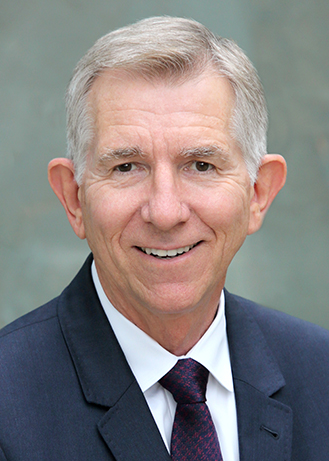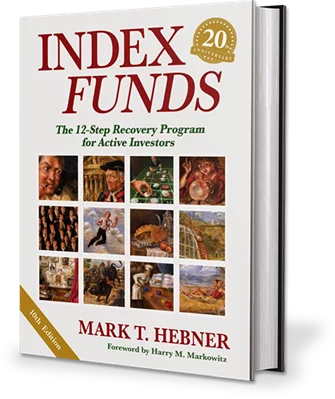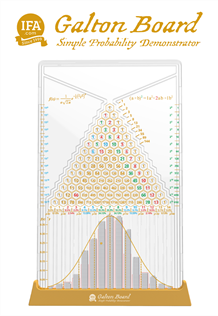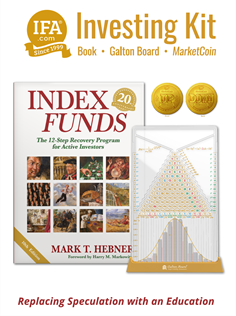How a single theorem reshaped finance, why market timing is so hard, and how these ideas live on in index funds and IFA's MarketCoin.
In 1965, Paul A. Samuelson published a short but revolutionary paper in Industrial Management Review titled "Proof That Properly Anticipated Prices Fluctuate Randomly." His argument was elegant: if markets are competitive and prices fully reflect all available information, then future price changes must be unpredictable. If everyone knew a price would rise tomorrow, it would rise today—instantly eliminating the profit opportunity. Samuelson formalized this intuition using the concept of a martingale, a stochastic process where the best forecast of tomorrow's price is today's price. This was not a claim that markets are perfect, but that proper anticipation implies randomness in short-term movements.
Samuelson's insight built on the rediscovery of Louis Bachelier's 1900 thesis, Théorie de la Spéculation, which modeled stock prices as a Brownian motion decades before Einstein's work on particle paths. Samuelson replaced Bachelier's arithmetic Brownian motion with geometric Brownian motion, ensuring prices remain positive and proportional changes matter more than absolute changes—a cornerstone of modern option pricing and asset modeling. This intellectual lineage runs straight to the Black–Scholes–Merton option pricing model and the quantitative revolution in finance. Samuelson himself came close to deriving Black–Scholes but left the final step to his students.
Samuelson's theorem suggests that predictable patterns in price changes may not persist in an efficient market. Attempts to "beat the market" through timing or forecasting involve substantial risks. He famously quipped that most portfolio managers should "go out of business—take up plumbing, teach Greek, or help produce GDP in some useful way." His reasoning: after costs, very few can consistently outperform a passive benchmark. Later, Samuelson added nuance with his dictum: markets are "micro efficient" (individual stocks quickly reflect information) but "macro inefficient" (aggregate markets can swing above or below fundamentals for long periods). This explains why short-term timing fails even if long-term valuation cycles exist.
Samuelson didn't just theorize—he advocated for practical change. In a 1974 essay, he challenged someone to create a low-cost portfolio tracking the S&P 500. John Bogle answered that call, launching the First Index Investment Trust (now Vanguard 500 Index Fund) in 1976. Samuelson celebrated the move in his Newsweek column, calling it the fulfillment of his "explicit prayer." Today, trillions of dollars sit in index funds—an idea rooted in Samuelson's proof that prices move randomly and his insistence that passive investing is the rational default.
Beyond his academic work, Samuelson also penned essays under the pseudonym "Adam Smith"—a playful nod to the father of economics. Writing under this name gave him freedom to explain complex ideas in plain language and to critique market myths with wit and clarity. These columns helped popularize the notion that markets, while efficient in the short run, are unpredictable enough to make market timing futile.
The First Institutional Index Funds: Wells Fargo and American National Bank
Samuelson's theoretical work and the Efficient Market Hypothesis (developed and formalized by Eugene Fama) inspired not only retail indexing but also the first institutional index funds. In 1971, Wells Fargo launched an index fund for the Samsonite Corporation's pension plan, designed to track all stocks on the New York Stock Exchange. This early version was equal-weighted and required constant rebalancing—a logistical nightmare in the era of ticker tape and adding machines. A later incarnation focused on the S&P 500, which proved easier to manage and became the template for future index funds.
Around the same time, American National Bank in Chicago, led by Rex Sinquefield, created one of the first S&P 500 index portfolios for institutional clients. These pioneering efforts were not available to retail investors but marked a turning point: passive investing was moving from theory to practice.
These institutional experiments laid the groundwork for the Vanguard revolution in 1976 and for firms like Dimensional Fund Advisors, which emerged in the early 1980s to apply academic research systematically to real-world portfolios.
Paul Cootner and MIT: Expanding the Random Walk Revolution
Samuelson taught at MIT, where he influenced a generation of financial economists—including Paul Cootner, who edited the landmark book The Random Character of Stock Market Prices (MIT Press, 1964). This volume compiled foundational papers on stochastic processes, random walks, and market efficiency, including Bachelier's rediscovered thesis. Cootner's work helped consolidate the empirical and theoretical case for randomness in price movements and became a standard reference for academics and practitioners alike.
Cootner's book amplified Samuelson's message: if price changes resemble Brownian motion, forecasting based on past patterns is futile. This intellectual environment at MIT was a crucible for modern finance, producing ideas that shaped portfolio theory, option pricing, and the rise of indexing.
Complementary Academic Environments: MIT and Chicago
While Samuelson and his colleagues at MIT were advancing theoretical models and stochastic proofs, Eugene Fama at the University of Chicago was rigorously testing these ideas with empirical data. Fama's work on the Efficient Market Hypothesis complemented Samuelson's theoretical foundation, creating a powerful synergy between MIT's mathematical rigor and Chicago's empirical discipline. Together, these two academic hubs transformed finance from a field of anecdotes into a science grounded in probability, statistics, and economic logic.
This fascinating interplay of theory and evidence—and its practical impact on investing—is vividly portrayed in the documentary Tune Out the Noise, directed by Errol Morris. The film tells the story of how groundbreaking academic research, particularly at Chicago, led to the birth of index funds and a revolution in investor behavior. It features Eugene Fama, Kenneth French, David Booth, Mark Hebner and others, showing how ideas moved from chalkboards to portfolios and changed the way the world invests.
Samuelson's Nobel and Enduring Influence
In 1970, Samuelson became the first American to win the Nobel Prize in Economics "for the scientific work through which he has developed static and dynamic economic theory and actively contributed to raising the level of analysis in economic science." His contributions span welfare economics, trade theory, and finance—but his random-price theorem remains one of his most practical legacies.
MarketCoin: Bringing Samuelson's Insight to Life
IFA's MarketCoin is a hands-on way to experience what Samuelson proved mathematically:
- Each flip represents a random news shock (up or down), plus a small positive drift to reflect the long-run equity premium.
- Some paths "sit out" randomly, mimicking market timers. Over many trials, these paths underperform buy-and-hold—just as Samuelson predicted.
- Plot thousands of flips and watch them form a bell curve, echoing Pascal's Triangle and the binomial distribution. Randomness at the micro level may create observable patterns at the macro level—the same principle behind the Galton Board and long-term market returns.
Why This Matters for Investors
Market timing and stock-picking are strategies built on predictability that doesn't exist in efficient markets. Broad, low-cost index funds capture the return of capitalism without speculative risk. Randomness in the short run is the price of admission for long-run growth.
Further Reading
- Samuelson (1965), Proof That Properly Anticipated Prices Fluctuate Randomly
- Bachelier (1900), Théorie de la Spéculation
- Fama (1970), Efficient Capital Markets: A Review of Theory and Empirical Work
- Cootner (1964), The Random Character of Stock Market Prices
- Bogle (1974), Challenge to Judgment and the birth of the index fund
- Wells Fargo and American National Bank history
- Documentary: Tune Out the Noise
- IFA MarketCoin resources: [ifa.com/coins]
Bottom line: Samuelson's theorem was more than a mathematical curiosity—it was a manifesto for rational investing. It showed why markets behave like a fair coin in the short run and why the smartest strategy is to embrace randomness, diversify globally, and tune out the noise. MarketCoin makes that lesson tangible, turning abstract theory into an unforgettable experience.
Disclosure:
This is not to be construed as an offer, solicitation, recommendation, or endorsement of any particular security, product, or service. This article is for informational purposes only and does not constitute personalized investment advice.
Performance results referenced reflect academic analyses and hypothetical historical scenarios; such results are not indicative of future outcomes under the current market conditions. Past data includes certain assumptions and costs not universally applicable to individual scenarios and may not represent achievable future results, especially under varying fees, expenses, and market conditions.
All investments carry risks, including the potential loss of principal. The article references empirical research from academia and industry. While foundational principles of diversification and low costs are illustrated with real-world results, outcomes depend heavily on economic conditions, trading environments, and individual circumstances. We recommend consulting a qualified financial advisor before making any investment decisions to ensure alignment with personal financial goals, risk tolerance, and circumstances.
For full compliance discussion and detailed services information about IFA and potential conflicts of interest, please visit www.adviserinfo.sec.gov and our firm brochure at www.ifa.com.















